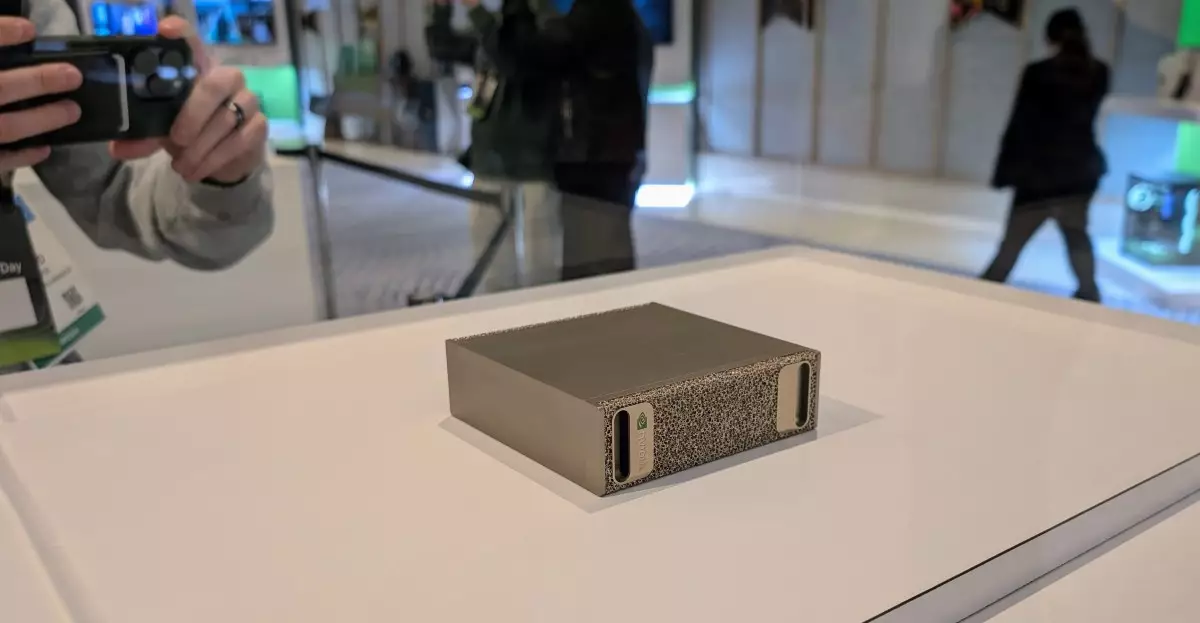The landscape of supercomputing is evolving rapidly as leading tech companies embrace Nvidia’s innovative Grace Blackwell platform. This shift is poised to redefine computing capabilities, allowing companies like Asus, Dell, and HP to carve out their niches within the burgeoning market of personal AI supercomputers. With the promise of transformative processing power, these new machines offer immense capabilities to handle AI workloads—an essential requirement in today’s data-driven world.
Empowering Third-Party Manufacturers
Nvidia’s announcement regarding the Grace Blackwell platform comes with a remarkable twist: allowing third-party manufacturers to create their own versions of this cutting-edge technology. This decision opens the floodgates for a diverse range of gaming, enterprise, and personal computing solutions that are tailored to specific use cases. It’s a strategic move that not only showcases Nvidia’s commitment to innovation but also signals a collaborative approach to technology development that can lead to exciting advancements across the industry.
Asus’s Strong Entry with the Ascent GX10
Among the first to respond to Nvidia’s announcement is Asus, which has unveiled its Ascent GX10 mini PC. This sleek model boasts the same remarkable performance figures as Nvidia’s own DGX Spark, delivering 1,000 AI TOPS with 128GB of unified memory. This makes the Ascent GX10 an attractive option for users seeking impressive computational capabilities in a compact form. However, while the aesthetic shift from a metallic older form to a more contemporary white plastic design aims to appeal to consumers, many tech enthusiasts may wonder if it compromises on durability and performance.
Notably, Asus has not yet opened pre-orders or disclosed pricing information for the GX10. This lack of transparency could hinder consumer enthusiasm, as potential buyers often seek both specifications and cost to gauge the value proposition of new technology. Asus must address these concerns swiftly to maintain momentum in a competitive market.
HP’s Premium Offering and Unique Features
HP has followed suit with its own entry, the ZGX Nano AI Station G1n, which exudes a more premium look reminiscent of professional workstations. Its design is optimized for functionality within a server environment, making it particularly suitable for enterprise clients who need robust and reliable hardware for AI applications. HP’s emphasis on aesthetics and practicality aligns well with its brand identity as a provider of high-quality tech solutions.
The G1n could attract professionals who are integrating AI into their workflows, as it combines performance with a sleek design that won’t look out of place in a sophisticated office setting. However, HP faces the challenge of distinguishing its solution from Asus and other competitors. As the market grows more crowded, the company must highlight unique selling points to remain relevant.
Dell’s Simplistic Approach and Future Prospects
In contrast, Dell’s offerings—specifically the Dell Pro Max with GB10—adopt an understated and functional design. While the sheer simplicity may appeal to customers seeking efficient hardware, it raises questions about maximizing user experience in a market rife with visually striking alternatives. Dell also announced plans for a larger workstation class machine, the Dell Pro Max with GB300, capable of delivering a staggering 20 petaflops of AI performance. Positioned to launch in summer 2025, it represents a significant step up in Dell’s AI capabilities.
Dell’s focus on performance and efficiency could pay off as businesses seek to optimize AI processing without sacrificing aesthetics. Yet, the challenge lies in making sure their tech delivers as promised, especially in an environment where competitors are rapidly enhancing their offerings.
The Future of Customized AI Supercomputers
Lenovo’s anticipated involvement in the Grace Blackwell initiative hints at an impending wave of customized solutions, indicating that this trend is far from a one-off phenomenon. As each company puts its unique spin on the same fundamental technology, consumers will be offered an array of choices that cater to varied needs. Whether designed for gaming, office productivity, or advanced analytics, the core collaboration between these manufacturers and Nvidia’s platform could shift the paradigm of supercomputing toward a more distributed and accessible format.
This unfolding story is not just about technological enhancement; it is a nuanced interplay between design, functionality, and market positioning—all of which underscore the competitive dynamics that will shape the future of AI-powered supercomputers. The stage is set for groundbreaking innovations, and as companies race to introduce their models, the excitement surrounding personal AI supercomputing continues to build.


Leave a Reply